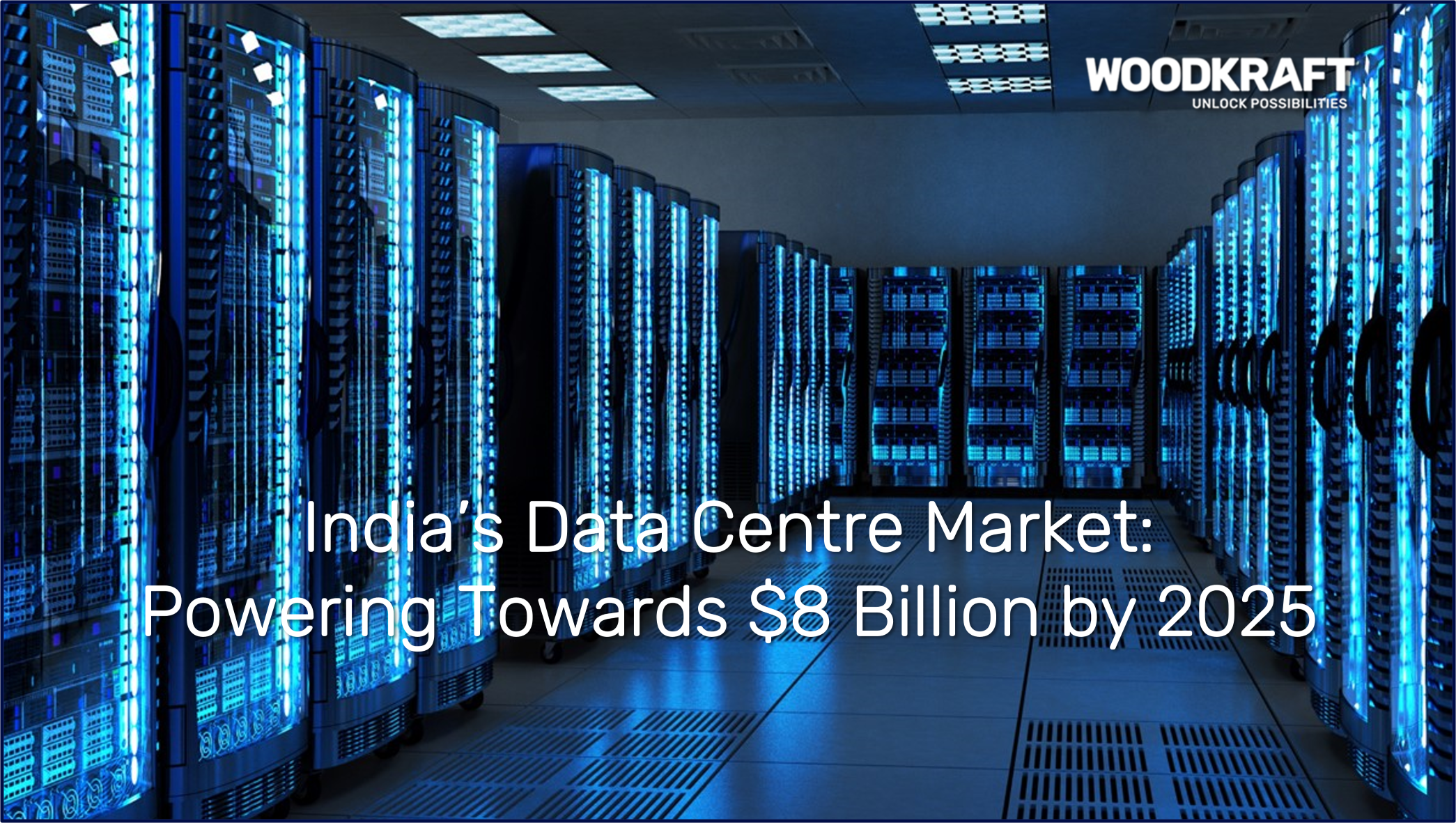BLOGS
India’s Data Centre Market: Powering Towards $8 Billion by 2025
November, 2024
India’s digital landscape is rapidly evolving, with its data centre market poised to grow from $7 billion in 2023 to $8 billion by 2025. This represents a compound annual growth rate (CAGR) of approximately 8%, while data centre capacity is expected to increase from 1,150 megawatts (MW) in 2023 to 1,700 MW by 2025, growing at a robust 22% annually.
Further projections suggest that India’s data centre capacity could reach 3,000 MW by 2030, making it a vital player in the global data ecosystem. This rapid transformation is driven by the rise in data consumption, advancements in technology like 5G and AI, and government-backed initiatives to foster investment in the sector.
Key Drivers of Growth
- Rising Data Consumption
- India has over 900 million mobile users, with affordable data plans making mobile internet access widespread. The resulting surge in data consumption has created an urgent need for robust storage and processing infrastructure. Services like streaming platforms, cloud storage, and digital payments further contribute to this demand.
- 5G Rollout
- The deployment of 5G is set to revolutionise data connectivity, providing faster speeds and reduced latency. This high-speed technology will benefit industries like healthcare, autonomous vehicles, and smart cities, all of which require real-time data processing capabilities. These advancements make it crucial for India to expand its data centre capacity to meet growing demand.
- Technological Advancements
- By 2030, 40–50% of India’s data centre capacity will cater to AI and GPU workloads. Technologies like edge computing, hybrid cloud, and automation are becoming integral to operations, reducing costs and improving efficiency. These advancements are not only shaping the industry but also driving its rapid growth.
- Government Initiatives
- The Indian government has introduced initiatives such as the Data Centre Incentivization Scheme and Data Centre Economic Zones (DCEZs), which offer tax benefits, streamlined approvals, and infrastructure support. Policies like data localisation and investments in digital infrastructure further bolster the sector’s growth, attracting both domestic and international players.
Geographical Distribution of Data Centres
India’s data centres are heavily concentrated in metropolitan hubs, with Mumbai, Delhi NCR, and Bengaluru accounting for approximately 55% of the total capacity.
- Mumbai: The largest data centre market in India, thanks to undersea cable landing stations, reliable power supply, and a dense fibre network.
- Delhi NCR: Proximity to government and corporate headquarters makes it a natural choice for enterprises seeking fast, reliable data storage.
- Bengaluru: The IT capital of India drives demand for high-quality data infrastructure, supported by its thriving tech ecosystem.
Challenges Hindering Growth
Despite its rapid expansion, the data centre industry faces several challenges:
- High Setup Costs: Building data centres requires significant upfront investments in land, equipment, and energy infrastructure, which can act as a barrier for smaller companies.
- Energy Demands and Sustainability: Data centres consume vast amounts of electricity, with cooling systems alone accounting for nearly 40% of energy use. Renewable energy adoption is essential to reduce their carbon footprint.
- Infrastructure Gaps: In rural and less developed areas, unreliable power supply and limited fibre connectivity restrict data centre expansion.
- Skilled Labour Shortage: India faces a gap in skilled professionals for managing data centres, including roles in cybersecurity and network engineering.
Emerging Trends in India’s Data Centre Industry
- Edge Computing
- By processing data closer to the source, edge computing reduces latency and enhances efficiency. It is particularly beneficial for applications like smart cities, healthcare, and autonomous vehicles, where quick data access is critical.
- Sustainability Initiatives
- Data centre operators are adopting green technologies, including solar and wind power, to reduce environmental impact. Innovations such as liquid cooling systems and energy-efficient designs are also gaining traction.
- Small and Modular Data Centres
- Modular data centres are emerging to meet localised needs, particularly in industries like healthcare and e-commerce, where immediate data access is crucial.
- Integration of 5G
- The rollout of 5G networks complements edge computing by enabling faster, more reliable connectivity, which is essential for data-intensive applications.
India in a Global Context
India’s data centre industry ranks 14th globally, with 151 operational centres as of 2023. The United States, by comparison, leads the market with over 5,300 centres. However, India’s growth trajectory, supported by investments from global giants like AWS, Google, and Microsoft, positions it as a major player in the Asia-Pacific region.
Conclusion
India’s data centre market is on a transformative path, driven by increasing data consumption, technological advancements, and supportive government policies. With capacity projected to reach 3,000 MW by 2030, the industry is set to play a critical role in the global digital economy. While challenges like energy consumption and high costs persist, innovative solutions and strategic investments are paving the way for sustainable growth. India is well on its way to becoming a key data hub, meeting both local and international data demands.
Note: This article is based on insights and data from the 1Lattice report, providing a comprehensive view of India’s data centre market growth, trends, and future outlook.
Stay inspired, stay informed, and stay connected with Woodkraft.
Follow Woodkraft on LinkedIn for the latest updates and inspiring workspace solutions.





